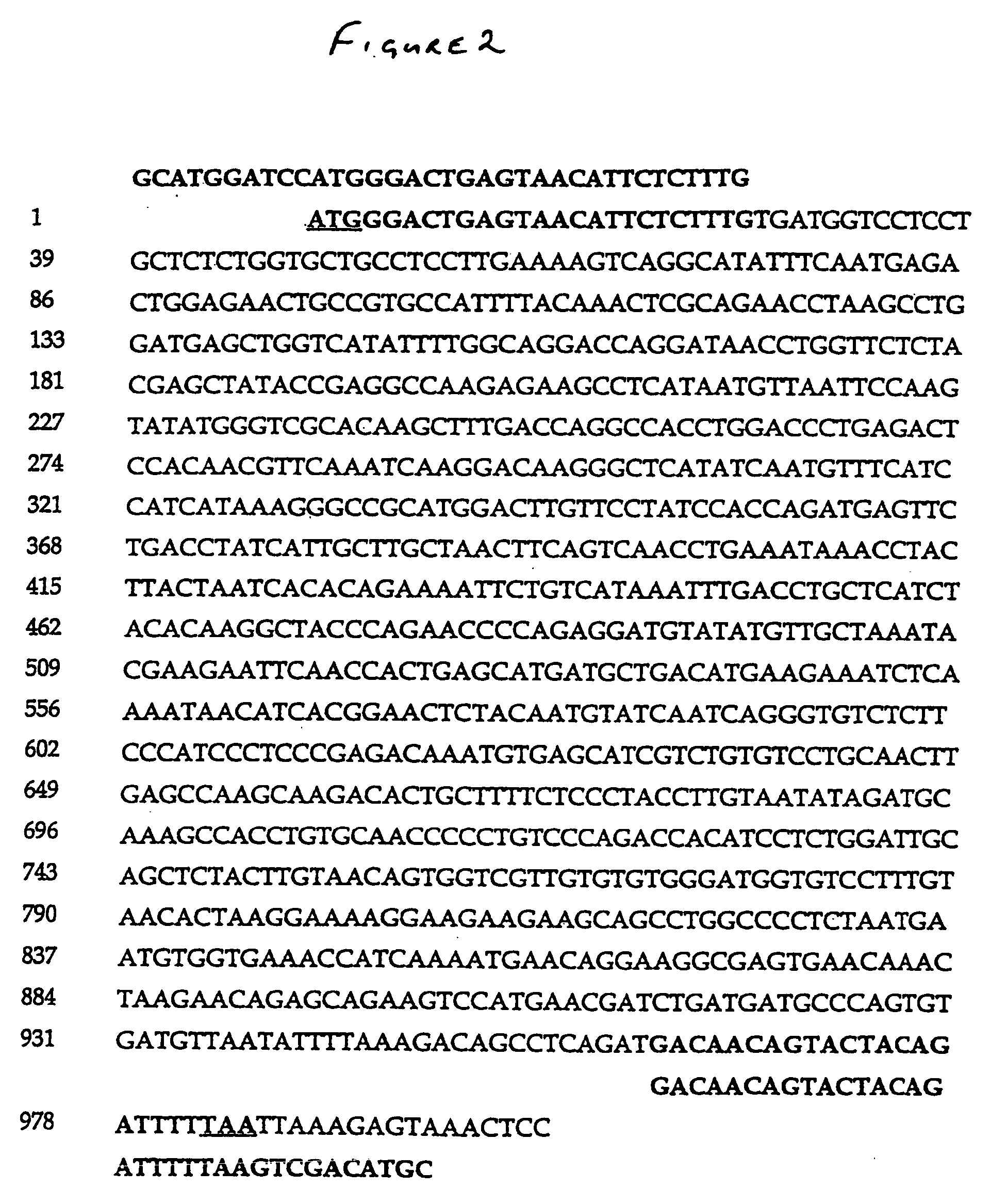Immunosuppression
a technology of immunosuppression and anti-vcam antibody, which is applied in the field of immunosuppression, can solve the problems of difficult prediction of the effect of anti-vcam antibody on the t cell mediated xenograft rejection mechanism, and the anergic rendering of cells, and achieve the effect of prolonging the survival of transplanted porcine pancreatic islets
- Summary
- Abstract
- Description
- Claims
- Application Information
AI Technical Summary
Benefits of technology
Problems solved by technology
Method used
Image
Examples
Embodiment Construction
5.1 Cloning Porcine Costimulatory Molecules
5.1.1 Cloning Porcine B7-2
[0094] RNA was extracted from primary and transformed porcine cells using a standard protocol. mRNA was then reverse transcribed and porcine B7-2 (poB7-2) amplified from the cDNA by 35 cycles of PCR at 56° C. with 1.5 mM magnesium. The 5′ and 3′ primers GCATGGATCCATGGGACTGAGTAACATTCTCTTTG and GCATGTCGACTTAAAAATCTGTAGTACTGTTGTC respectively were designed on the basis of the published poB7-2 sequence (60) to overlay the start and stop codons (FIG. 2). A 956 base pair fragment was generated and subcloned into the BamHI & Sal1 restriction sites of pbluescript. The nucleotide sequence was determined using standard m13 forward and reverse primers. The sequence of a single clone, CD86(i) is illustrated in FIG. 3, with comparison to the published sequences from porcine (FIG. 4), human and murine B7-2 (FIG. 5). One base pair difference is detected between our clone, CD86(i), and the published sequence at the 3′ prime en...
PUM
| Property | Measurement | Unit |
|---|---|---|
| immunogenic composition | aaaaa | aaaaa |
| size | aaaaa | aaaaa |
| physiological compatibility | aaaaa | aaaaa |
Abstract
Description
Claims
Application Information
 Login to View More
Login to View More - R&D
- Intellectual Property
- Life Sciences
- Materials
- Tech Scout
- Unparalleled Data Quality
- Higher Quality Content
- 60% Fewer Hallucinations
Browse by: Latest US Patents, China's latest patents, Technical Efficacy Thesaurus, Application Domain, Technology Topic, Popular Technical Reports.
© 2025 PatSnap. All rights reserved.Legal|Privacy policy|Modern Slavery Act Transparency Statement|Sitemap|About US| Contact US: help@patsnap.com



